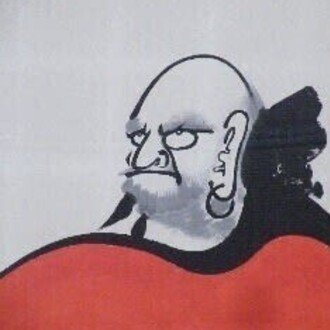
日本の伝統美「文様」の潜在的能力 【雑感】 Potential of Japanese traditional beauty "pattern"
日本の伝統文化を紐解くジャンルとして存在感を示すものに「文様」がある。
その中でも少し馴染みがあるとしたら「吉祥文様」だろう。吉祥文様はご存知のように縁起のよい、また幸福を呼びこむ文様とされている。
One of the genres that unravels Japanese traditional culture is "patterns".
If there is a little familiarity among them, "Kissho pattern" would be. As you know, the Kissho pattern is said to be auspicious and a pattern that calls for happiness.
由来は中国からのものと日本の縁起物に由来する柄・模様とがあるようだ。たとえば、中国由来の柄・模様としては、宝物と言われるものを集めた「宝尽くし」と、発展や成功の象徴になっている「龍」のものとがある。
一方、日本由来の柄・模様としては周知の「松竹梅」や「鶴亀」などが代表的な文様モチーフと言っていいだろう。そのモチーフになっているのが大きく分けると「植物」「動物」「器物」「風物」「図象」「故事」などがある。
The origin seems to be from China and from Japanese lucky charms. For example, patterns originating in China include the "Treasure", a collection of treasures, and the "dragon", a symbol of development and success.
On the other hand, well-known patterns from Japan such as “Shochikubai” and “Tsurukame” can be called typical motifs. The motifs are broadly divided into "plants," "animals," "objects," "features," "illustrations," and "old facts."

亀・鶴・松・竹・梅 / turtle・crane・pines・bamboo・plum
いずれも吉祥文様のほとんどが着物のデザイン柄に使われ着物文化とともに発展してきた。しかしながら着物が廃れ始めた昭和中期ごろから文様は伝統文化扱いの一角になっているのは確かである。そこで、改めて注視すると美しさを際立たせる潜在美的能力を持っているような気がする。好みや年齢のせいもあるかもしれないが、主役を際立たせる脇の美しさをもっている。
In each case, most of the Kissho patterns have been used in kimono design patterns and have evolved with the kimono culture. However, from around the middle of the Showa era when kimonos began to disappear, it is certain that patterns have become a treasure of traditional culture. Therefore, when I look again, I feel that I have the potential aesthetic ability to make beauty stand out. Although it may be due to taste or age, it has a beauty beside the main character.
吉祥文様の中でもよく知られている「松竹梅」はその典型である。常緑で寿命が長い松、積雪にも折れない竹、冬の寒い中でも蕾を付け芳香を漂わす梅を表し、主役の価値をより一層高めているのは間違いない。
Shochikubai, a well-known Kissho pattern, is a typical example. There is no doubt that the evergreen and long-lived Pine, the bamboo that does not break even in the snow, and the Ume that has buds and fragrance even in the cold of winter, have further enhanced the value of the protagonist.

着物柄として(松竹梅) / Pines・Bamboo・Plum patterns for KIMONO
そんな文様が伝統文化財としての役割に留まるのはあまりにも惜しい。日常の中で日本の美を象徴する形状をもっと利用するシーンを創造できたらと常々思っている。それにはこれからの “新しさ” を生み出せる人たちの力に期待している。
It is too regrettable that such a pattern remains as a traditional cultural property. I always want to create scenes that make more use of shapes that symbolize Japanese beauty in my everyday life. For that, I look forward to the power of those who can create “newness” in the future.
レポート / 渡邉雄二
Reported by Yuji Watanabe
いいなと思ったら応援しよう!

